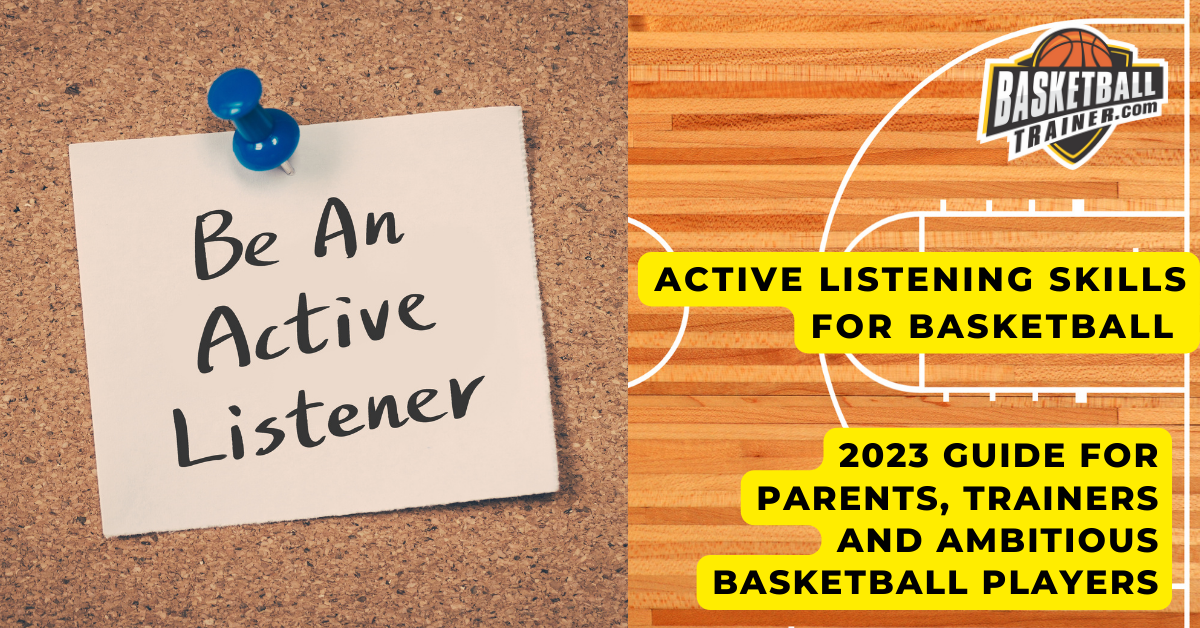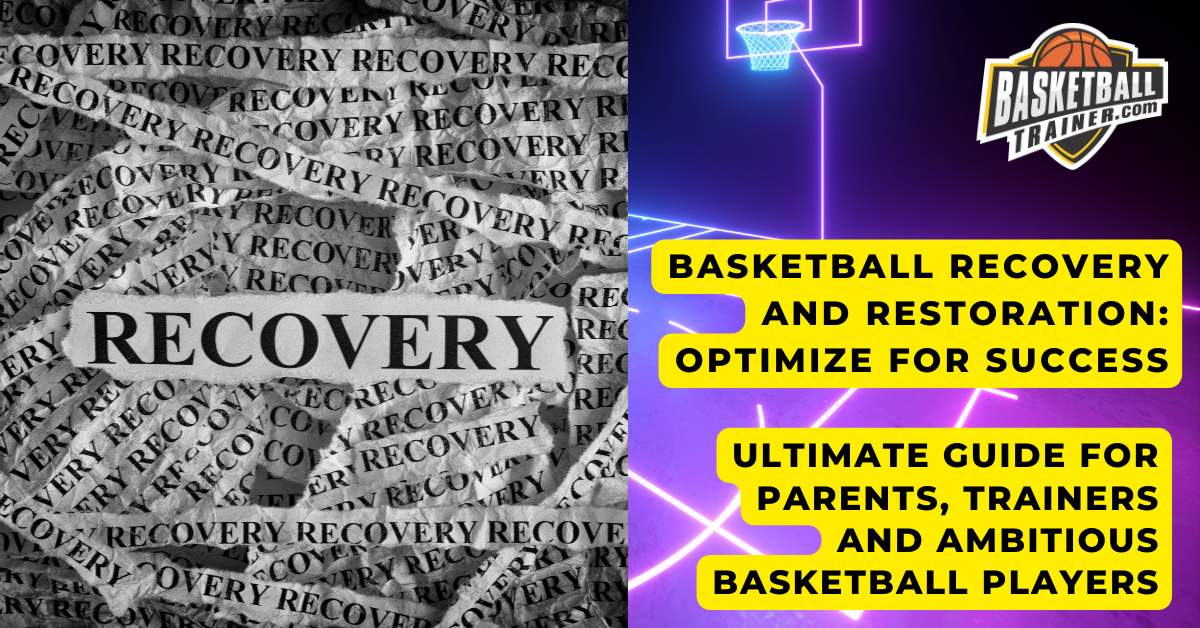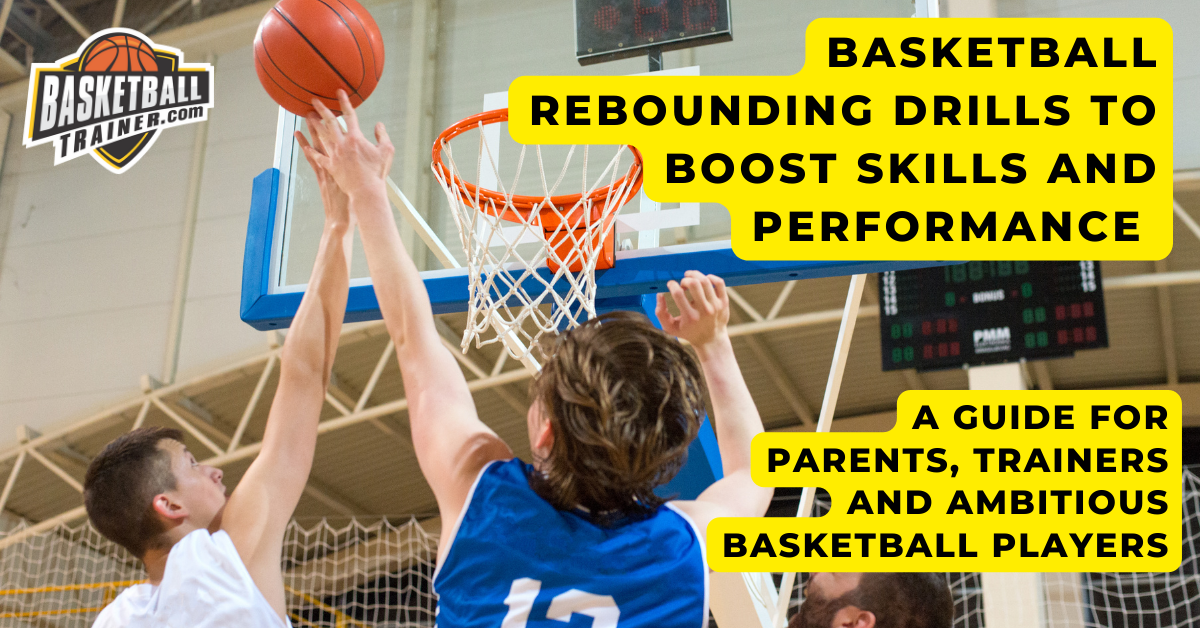
Finding ways for parents to support basketball teams without coaching are crucial in creating a positive and successful environment for young athletes. This blog post will outline various methods to contribute positively to your child’s team while respecting the coaching staff, such as fundraising opportunities, managing stats and concession sales, participating in booster clubs, offering photography or DJ services at games and events, making financial donations, fostering inclusivity among families and players on the team.
We’ll discuss fundraising opportunities, managing stats and concession sales, participating in booster clubs, offering photography or DJ services at games and events, making financial donations, keeping the basketball scorebook, keeping the clock, fostering inclusivity among families and players on the team, as well as setting healthy boundaries so you don’t overcommit yourself.
By understanding these ways for parents to support basketball teams without coaching directly involved with on-court decisions or practice plans, you’ll be able to make a significant impact on your child’s athletic experience while maintaining a harmonious relationship with coaches and other parents alike.
Table of Contents:
- Fundraising and Financial Support
- Assisting with Game Day Operations
- Booster Club Involvement
- Capturing Memories through Photography and DJ Services
- Promoting Inclusivity Among Families & Players
- Setting Boundaries and Avoiding Overcommitment
- Enjoying the Team Experience
- FAQs in Relation to Ways for Parents to Support Basketball Teams Without Coaching
- Conclusion
Fundraising and Financial Support
Parents play an important role in supporting their child’s basketball team. One way to show this support is by organizing and participating in creative fundraisers, such as bake sales or car washes. These activities help cover costs associated with equipment upgrades, travel expenses, and other related needs of the team. Parents can also offer monetary support for the squad, if feasible. This demonstrates a commitment to the success of not only their own child but also the entire team.
Parents must be cognizant of the fact that mentors have an outlook on how their teams should perform defensively and offensively, along with the drills used in training. It is important for parents not just accept these decisions but respect them as well. Additionally, having regular parent meetings helps ensure everyone understands coaching expectations and boundaries from both sides: coaches should be clear about what kind of behavior will not be tolerated from players or parents while parents should understand that there may be times when coaches must prioritize player safety over winning games at all costs.
Parents can make a huge difference in their child’s basketball team by providing financial support through creative fundraisers and direct contributions. Additionally, parents can lend a hand on game day with tasks such as concession stand management, ticket sales assistance, and recording of statistics to ensure the smooth running of operations.
Assisting with Game Day Operations
Game day operations can be a challenging endeavor for youth sports teams. Parents can help make sure that game days run smoothly and coaches are able to focus on coaching by taking on certain tasks.
Basketball Clock
Keeping the clock at basketball games is crucial to ensure that the game runs smoothly and within the allotted time frame. The clock operator should have a clear view of the court and be located in a position that allows them to see the game clock clearly. Before the game begins, the clock should be set to the appropriate time, and the operator should verify that the scoreboard is working correctly. During the game, the clock operator should start the clock when the ball is tipped off and stop it when the referee blows the whistle to indicate a dead ball. They should also be aware of the shot clock, starting it when a team gains possession of the ball and stopping it when a shot is taken or when the ball changes possession. The clock operator must be attentive and focused on the game to ensure that the time is accurate, and they should communicate with the officials to coordinate the timing of timeouts and other game events. At the end of the game, the operator should verify the final score and time with the officials before the clock is stopped for the last time.
Basketball Scorebook
Keeping a scorebook at basketball games is an essential part of the sport. To maintain an accurate scorebook, the scorer should sit in a location that allows them to have a clear view of the court. They should record the game’s starting time and note the names of the players and their respective teams. Each score should be recorded immediately after a basket or free throw is made, indicating the name of the player who scored and the type of score. Fouls, turnovers, and timeouts should also be recorded. The scorebook should be periodically reviewed to ensure that all entries are correct, and the final score should be verified at the end of the game. It’s essential to keep the scorebook neat and tidy, using a consistent format throughout the game to ensure accuracy.
Concession Stand Management
Concessions are an important part of any game day experience. Parents should collaborate to make sure the concession stands are equipped with food, drinks, and other goods; also having volunteers who know how to manage them. Ticket sales assistance is also necessary; parents should work together to sell tickets at the gate or online before each game in order to maximize attendance and revenue. Finally, recording game statistics helps coaches track player performance throughout the season; parents should take notes during games so they have accurate records of what happened on the court.
Assisting with game day operations can be a great way to show support for your basketball team without taking on the role of coach. Booster club involvement is another excellent avenue that parents can explore to demonstrate their commitment and enthusiasm for the team.
Booster Club Involvement
Booster organizations can be a fantastic way for moms and dads to show their backing and give supplemental tools to their kid’s basketball squad. Events organized by booster clubs can be incredibly effective in raising funds, fostering camaraderie among players’ families, and promoting school spirit.
When planning engaging events, it is important to consider the interests of all involved – players, coaches, and parents alike. For example, hosting a tournament or game night that encourages friendly competition between teams is an excellent way to bring everyone together while also providing some much-needed fun. Additionally, organizing activities such as pizza nights or movie nights at the gym can help build relationships within the team’s community while also helping with fundraising efforts.
Another key role of booster clubs is supporting uniform purchases for the entire team. Uniforms are essential for any competitive sport and having access to quality apparel helps create an atmosphere of professionalism on the court which can boost morale and inspire confidence in athletes of all ages. Booster club members should make sure they understand what types of uniforms their team needs so they know how much money needs to be raised in order to purchase them. It may even be possible for booster clubs to negotiate discounts with vendors if enough items need purchasing at once.
Overall, joining or starting a booster club provides an invaluable service when it comes to youth sports teams. From organizing exciting events that foster community spirit through fundraising initiatives like uniform purchases, there are many ways these organizations can help young athletes reach their goals both on and off the court.
Booster club involvement is a great way for parents to support their basketball team without coaching, and it can be done through planning engaging events or helping with uniform purchases. Additionally, capturing memories through photography and DJ services can also be an effective way of showing your team you care.
Capturing Memories through Photography and DJ Services
Capturing memories through photography and DJ services is an important part of the youth sports experience. Parents, coaches, and players can reflect nostalgically on their shared experiences while also having tangible reminders of the season.
Photography is a great way to capture all the action on game day. Parents who are skilled in photography can take stunning shots during games or practices that will be cherished for years to come. These images can then be spread around, either to relatives or made public for all to appreciate. Photos taken at special events like team parties or award ceremonies add even more value as they help create lasting memories from those moments.
DJ services provide an extra level of fun when celebrating a successful season or honoring individual achievements. A professional DJ can play music that appeals to everyone in attendance and helps create a festive atmosphere that brings out everyone’s inner party animal. Music also serves as an excellent backdrop for post-game celebrations where players, families, and coaching staff can reflect on the season’s successes together in a relaxed environment without any pressure from competition.
By utilizing both photography and DJ services, teams have the opportunity to make sure no moment goes unappreciated throughout their entire season journey – whether it’s winning streaks or learning how to play defense better. Each memory should be celebrated with enthusiasm, which not only fosters camaraderie among families but also encourages open communication between coaches and parents so they understand each other’s philosophies better which ultimately benefits the entire team dynamic.
Capturing memories through photography and DJ services can be a great way to keep the team spirit alive, even when games are over. To further promote inclusivity among families and players, parents should take steps such as encouraging open communication and planning inclusive team events.
Promoting Inclusivity Among Families & Players
As a basketball training and player development expert, I understand the importance of promoting inclusivity among families and players. Creating a space where all individuals are accepted and appreciated, no matter their varied backgrounds, is imperative.
Encouraging open communication between coaches, parents, and players is key for creating a welcoming atmosphere. Parents should be motivated to go to team conferences or parent gatherings with the coaching staff in order to gain a more comprehensive comprehension of the squad’s outlook on playing defense and other facets of the sport. This will help ensure that all members are working together towards achieving common goals as one unit.
In addition to encouraging open communication, planning inclusive team events can also go a long way in fostering a sense of unity amongst players and families alike. Arranging social events, like movie screenings or BBQs that are accessible to all squad members, can assist in eliminating walls between distinct backgrounds and grant individuals from different cultures a chance to become familiar with each other while having a great time.
I strongly like the idea of a basketball parents happy hour. Your parents coming together without kids.
Ultimately, it’s essential for parents to keep in mind that youth sports aren’t only about triumphing in contests; they’re also about instructing kids how to collaborate as a single unit regardless of their disparities. By setting boundaries around overcommitment while simultaneously promoting inclusivity among families and players, we can ensure our children have positive experiences during their time playing basketball.
By promoting inclusivity among families and players, parents can help create an environment of mutual respect that encourages open communication. Setting boundaries and avoiding overcommitment is the next step to ensuring a successful team experience for everyone involved.
Setting Boundaries and Avoiding Overcommitment
As a parent of an aspiring basketball player, it is essential to grasp the necessity of establishing limits and averting over-exertion. It’s essential for parents to respect coaches’ decisions when supporting their child’s team. This means not questioning or undermining coaching philosophy during games, practices, or in conversations with other parents. Additionally, it’s important for parents to attend parent meetings and take time to listen and understand what is being said. Doing so will help ensure that all parties are on the same page about expectations for players and families alike.
Parents should also prioritize their own well-being when involved with youth sports teams; this includes taking breaks from attending every practice or game if needed. Although they may want to be present at every opportunity they can, they must remember that there is more than just playing defense or shooting threes – mental health matters too. Taking care of oneself will ultimately benefit the entire team as it allows them a chance to recharge and come back feeling refreshed which can lead to better performance overall.
It’s also important for parents not to overcommit themselves financially either; while buying uniforms may be necessary in some cases, fundraising efforts such as bake sales are often helpful in raising funds without having individuals shoulder too much responsibility alone. By following these tips on setting boundaries and avoiding overcommitment when supporting your child’s basketball team you can make sure everyone stays safe mentally, physically, and emotionally – both on and off the court.
Limiting expectations and abstaining from over-extending are critical for a fruitful squad experience, permitting parents to aid their kids in the most efficient manner. By enjoying the team experience, parents can foster camaraderie among families while celebrating individual milestones along the way.
Enjoying the Team Experience
Youth sports are a great way to teach kids important lessons, like teamwork and perseverance. As parents, it’s our job to make sure they enjoy the experience while learning these valuable life skills. To do this, we need to celebrate individual milestones and foster camaraderie among families.
When a player has an impressive game or reaches a personal goal, take the time to recognize their accomplishments. By acknowledging their successes, it will not only boost each player’s self-esteem but also foster a sense of unity and support among the team. It also helps create positive relationships between teammates by showing that everyone is valued for their contributions.
It’s also important for parents of players on the same team to get along with one another. If possible, organize group events where families can socialize outside of practice or games – such as picnics or movie nights – so that everyone feels included in the larger team community. This encourages strong bonds between players which leads to better communication during practices and games which ultimately results in improved performance on court too.
Ultimately, remember that youth sports are meant to be fun experiences for all involved and parents must understand this before signing up their children. If not, it is best to find alternative activities elsewhere instead.
FAQs in Relation to Ways for Parents to Support Basketball Teams Without Coaching
How do you support your child when they don’t make the team?
As a parent, it can be challenging to provide guidance when your child does not make the team; however, there are numerous other avenues for them to pursue their basketball ambitions. Nevertheless, there are still many avenues to assist your child in pursuing their basketball dreams. Encourage them to find alternative training opportunities such as private lessons or camps with experienced coaches. Research online resources that offer drills and tips for developing skills at home. Help your child set realistic expectations and focus on individual improvement rather than team selection outcomes. Lastly, remind them of their strengths and reinforce the idea that success takes time and effort – not just talent alone.
How do you become a supportive parent of an athlete?
Supporting an athlete can be a rewarding experience. It is important to focus on positive reinforcement, rather than criticism. Encourage your child to strive for excellence and celebrate successes with them. Encourage your child to be diligent and maintain integrity in their competitive endeavors. Make sure that you are available to listen when they need it and provide helpful advice without being overbearing or intrusive. Be sure that the targets you set are achievable, so your kid won’t feel weighed down or frustrated by their achievements.
Should parents coach their kids in sports?
It depends on the individual situation. Parents may be able to provide an advantageous coaching experience for their kids, given they possess sports expertise and a sound knowledge of teaching fundamentals. However, it is important to consider whether parents are able to provide an unbiased perspective when assessing performance or providing constructive criticism. It may also be beneficial to involve professional trainers who specialize in basketball skills development and can offer objective feedback on technique and progress. Ultimately, the decision should depend on what will best help the child reach their goals as a player.
How can I help my son make the basketball team?
For your child to be successful in making the basketball team, it is essential to locate a program that concentrates on honing skills and enhancing physical fitness. A qualified coach can assess your son’s current abilities and develop an individualized plan tailored to his needs. Additionally, attending camps or clinics led by experienced professionals can provide valuable insight into technique and strategy. Finally, utilizing apps or online resources for drills and practice plans can supplement traditional training methods. With hard work, dedication, and proper guidance from experts in the field of basketball training, your son will have all the tools necessary to succeed at tryouts.
Conclusion
In conclusion, there are many ways for parents to support their child’s basketball team without coaching. From fundraising and stats to concession/tickets and booster clubs, photography or DJ services, financial donations, inclusivity and interactions with other families and players – it all adds up. Setting boundaries is important too; don’t overcommit yourself so that you can still enjoy the experience as a parent. Discovering an individualized approach to backing your child’s squad from the stands is achievable with these ideas in mind.
Parents looking to support their basketball player’s development without coaching can rely on BasketballTrainer.com for expert advice and resources. Our comprehensive selection of trainers, teams, camps, products and apps provide the perfect tools to help your child reach their full potential.






















 One of the primary advantages of executive function training is its ability to enhance decision-making abilities. Basketball requires quick thinking and rapid decision making in response to ever-changing game situations. By developing your executive functioning skills, you’ll be better equipped to make smart choices under pressure, leading to more
One of the primary advantages of executive function training is its ability to enhance decision-making abilities. Basketball requires quick thinking and rapid decision making in response to ever-changing game situations. By developing your executive functioning skills, you’ll be better equipped to make smart choices under pressure, leading to more  Prioritizing tasks: With improved time management skills through executive function training, athletes learn how to prioritize tasks effectively so they can allocate appropriate time towards skill development, strength conditioning sessions, film study sessions etc., which contribute positively towards their growth as a player.
Prioritizing tasks: With improved time management skills through executive function training, athletes learn how to prioritize tasks effectively so they can allocate appropriate time towards skill development, strength conditioning sessions, film study sessions etc., which contribute positively towards their growth as a player.

 The key principle behind
The key principle behind 
 It’s natural to feel nervous before a big game or tournament; however, it’s essential to manage these feelings effectively to perform at your best. One helpful technique is using anxiety as a performance enhancer. By viewing nerves as excitement rather than fear, you can channel that energy into increased motivation and intensity on the court.
It’s natural to feel nervous before a big game or tournament; however, it’s essential to manage these feelings effectively to perform at your best. One helpful technique is using anxiety as a performance enhancer. By viewing nerves as excitement rather than fear, you can channel that energy into increased motivation and intensity on the court. No basketball player is perfect; everyone makes mistakes. The key is learning how to manage these errors effectively so they don’t negatively impact your performance throughout the tournament.
No basketball player is perfect; everyone makes mistakes. The key is learning how to manage these errors effectively so they don’t negatively impact your performance throughout the tournament.






